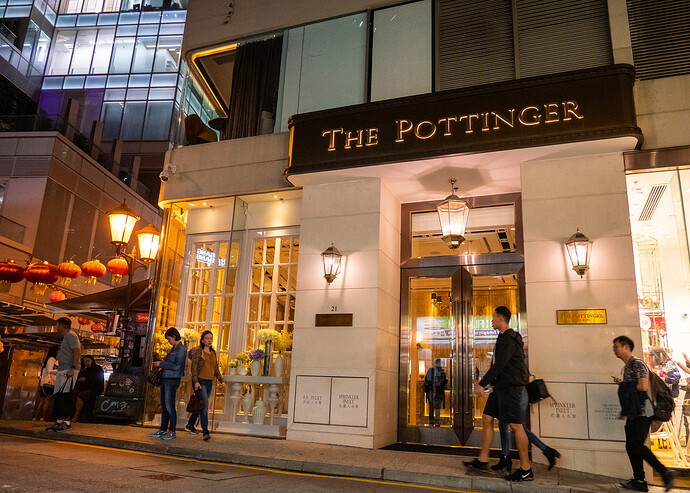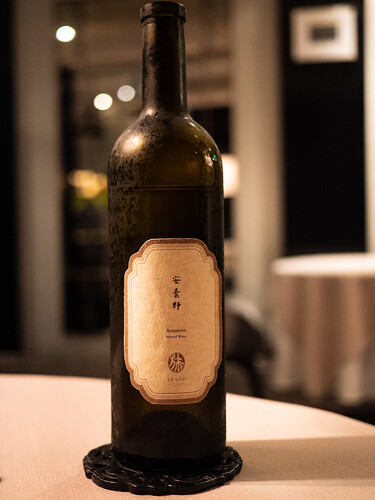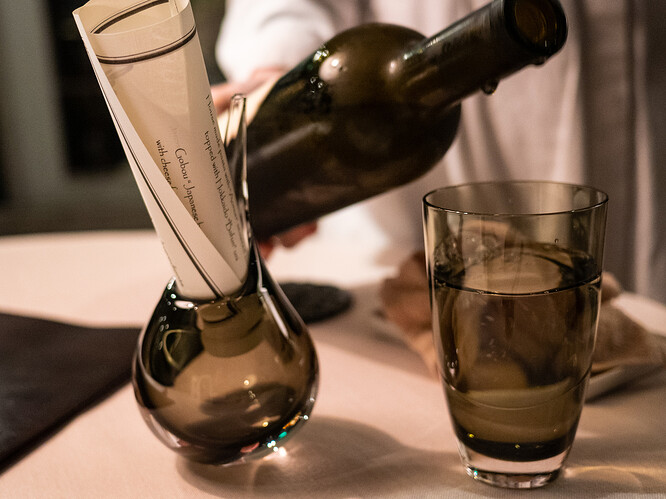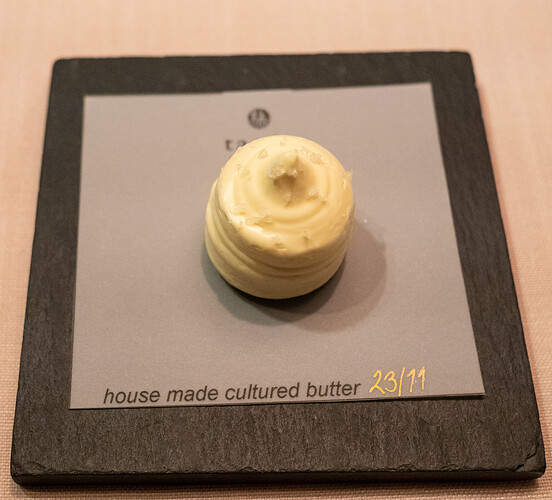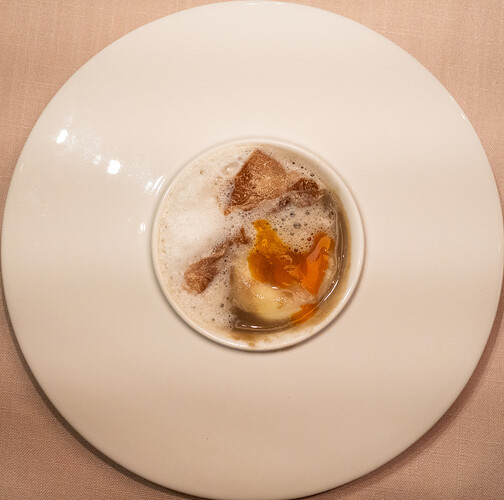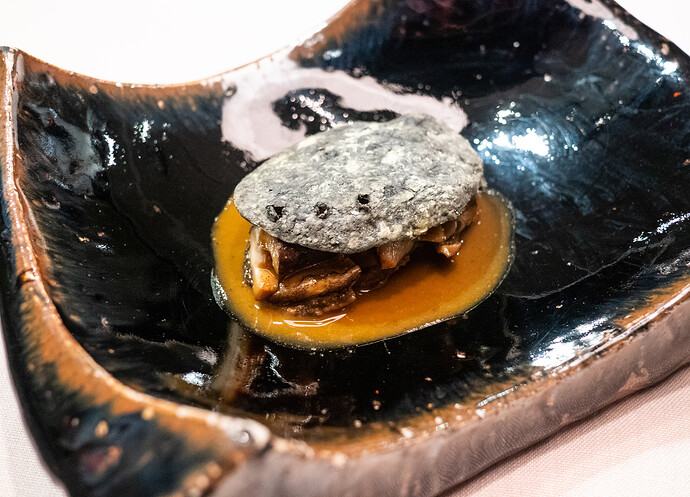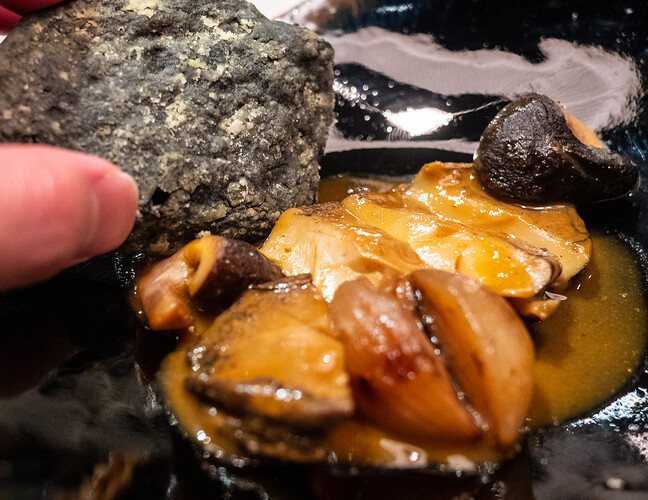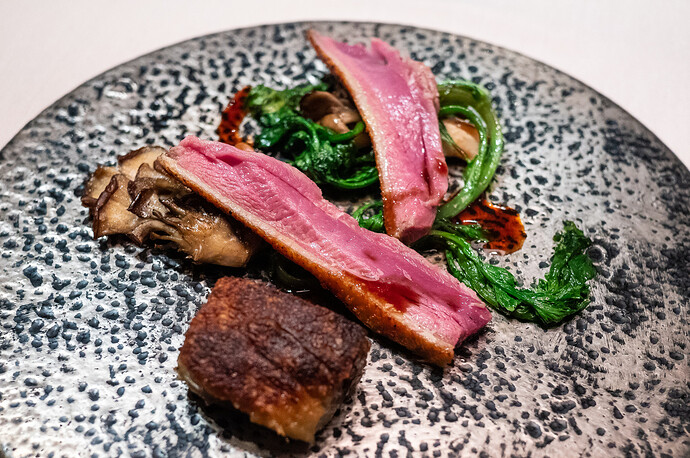While I was doing research before my Hong Kong trip, this restaurant, Ta Vie, caught my eyes. Executive chef Hideaki Sato began his career cooking in French restaurants for 10 years before he jumped ship to Japanese cuisine working at the 3 Michelin starred Nihonryori RyuGin in Tokyo. 3 years later, he moved to Hong Kong to head the restaurant’s first overseas outpost, Tenku RyuGin, which garnered 2 Michelin stars in 2012 within 6 months of opening.
Fast forward to 2015, chef Sato opened up his very own restaurant in Ta Vie located in the heart of Central, Hong Kong. In 2016, the restaurant earned its first Michelin star and followed up with 2 stars in the 2017, 2018, and 2019 guide.
I’ve generally been fond of the French-Japanese genre, so how will this fare?
Ta Vie is located on the 2nd floor within this boutique hotel near the entertainment district of Lan Kwai Fong
Being a party of 1, I was seated close to the entrance and felt a bit isolated from the buzz in the main dining room.
Mineral water from Azumino
Interestingly, there are only 2 servers in the restaurant, and 1 of which did double duty as hostess.
A little bit about their Nukazuke, a type of Japanese pickle made by fermenting vegetables in rice bran, fermented bread.
Course 1a: Bean sprout cake salé
Placed inside a mussel shell, the bean sprout cake imitates the color and shape of a mussel. It’s savory from the fish stock base with a touch of sweetness. On the other hand, the texture is dense crumbly texture which reminds me of a cross between a biscuit and cake.
Course 1b: Bean sprout “dau miu” and Hokkaido mussels with white wine sauce
The squid ink crisps atop the mussels mimick the actual shells which juxtaposed with the cake salé being the bivalve. The mollusks are perfectly cooked and plump while the bean sprouts, leeks, and potato give the dish various texture contrasts along with complexity to each bite.
Oh how I love good bread…
Ta Vie cultures their own butter daily. While it’s very light and creamy on the palate, it doesn’t have the typical fragrance that I’m accustomed to with French butter.
Ricotta + a touch of olive oil is also provided. It’s super smooth with a mild tang. The touch of olive oil provides another layer of flavor in terms of bitterness and fruit.
Bread is fantastic. It’s crusty out the outside with a spongy innards. 4 of these bad boys were destroyed with a healthy dose of butter on this night.
Course 2: Cauliflower “a la meunière” with sea cauliflower (cod milt), white sesame dentelle
Once again, ingredients are used to imitate each other and it’s the cauliflower and cod milt’s turn. The cod milt is as soft, smooth, and creamy as the lightest egg custard you can think of. Flavor wise, it reminds me of a more intense and savory version of uni with sweetness dialed back. The accompanying anchovy brown butter sauce stood up well to the colt milt without overpowering its delicate flavor while lending its saltiness to the crunchy charred cauliflower. Lastly, sesame tuile’s crispiness and the cauliflower puree brought another dimension to the two main ingredients’ diametrically opposed texture.
Course 3: “Aori” squid and avocado tartar with oscietra caviar
Ta Vie’s cooking has a touch of whimsy and this course is no different. The “plate” acts as a palette and you’re instructed to mix the colorful ingredients much like a painter would mix colors on theirs.
A standout tartare! You have tang from the mystery dressing, creaminess from avocado, mild sweetness and chew from the chunky Bigfin squid, freshness and brightness from the brunoise tomato, delicate onion flavor from the finely chopped chives, and ocean salinity from the Russian caviar to tie them all together. To top it off, two light and incredibly thin squid ink chips with lots of umami are provided to pair with the tartare which added another layer of flavor of texture to the dish.
Course #4: House made pasta with “Aonori” seaweed sauce topped with Hokkaido “Bafun” uni
First thing to note is that the uni was sweet like sugar!
Course #5: Gobou “Japanese burdock” soup with cheese foam, onsen egg, white truffle
The white truffle immediately gives off an intoxicating aroma and provides bursts of that classic intensely earthy flavor to the rich and creamy soup. The burdock soup, to me, tastes similar to artichoke that’s a bit more sharp and piquant. However, the light cheese foam got lost in the mix. Lastly, the onseng egg provides a slippery smooth texture contrast without imparting flavor of any kind to the dish.
Money shot of the onsen egg after it has burst.
Course #6: “Civet” braised abalone covered with “abalone shell”
The edible shell, texture wise, reminds me of short bread cookie with limited flavor.
Roasted mushroom and pearl onion provide complexity and an extra layer of texture to the dish but they aren’t necessary IMO.
The flavorful mollusk is tender but it retained a pleasant chew mouthfeel. Abalone liver sauce, on the other hand, is tamed down and rounded out with butter.
Course #7: Roasted French Challans duck breast with Fujian “rock tea” flavored sauce
Duck is cooked 2 ways: roasted and confit. Roasted duck is cooked to a rare side of medium rare with semi-crispy skin which paired nicely with the deeply savory sauce that has a touch of sweetness to round things out. The accompanying Maitake shrooms are cooked perfectly…earthy with a hint of smokiness from the charred crispy edges. Rounding out the dish is the Chrysanthemum greens that give the dish a much needed freshness lift and act as a palate cleanser.
Duck confit turns out to be the kitchen’s only major flaw of the night. It has a crispy skin but the meat was on the dry side.
Course #8: “Les Feuilles Mortes” fresh chestnuts Mont-Blanc with Pu’er tea ice cream
I love chestnut based desserts, do you?
Pu’er tea ice cream tastes just as is advertised but the texture is a touch watery. Some sort of crisps topped the dessert to give the dish a bit of a crispy savory note.
Chestnut puree is nice and light with the expected sweet and earthy flavor. On the bottom of the creamy chestnut worms lie a hard meringue acting as the base which gives the dessert a crispy texture.
Palate cleanser coming up!
It’s a tea with a mix of hibiscus, orange, and chrysanthemum…tart with mild sweetness…refreshing as promised!
Course #9: “Baba au Rhum” Goji berry, kaki, salted egg yolk
This rendition of rum baba consists of a sake soaked cake sitting at the bottom. The middle layer is creamy fresh persimmons with mild sweetness. Finally, atop the tower is vanilla ice cream showered with fresh and freeze dried goji berry with grated salty egg yolk to give the dessert some savory notes.
Walnut meringue paired with oolong tea as petit 4’s to end the meal.
These babies are quite tasty. They’re mildly sweet with chopped bits of toasted walnut mixed in.
In short? Strong meal. Hong Kong’s fine dining scene is no slouch for sure!
Ta Vie / 旅
2/F, The Pottinger
74 Queen’s Road Central
Central, Hong Kong
